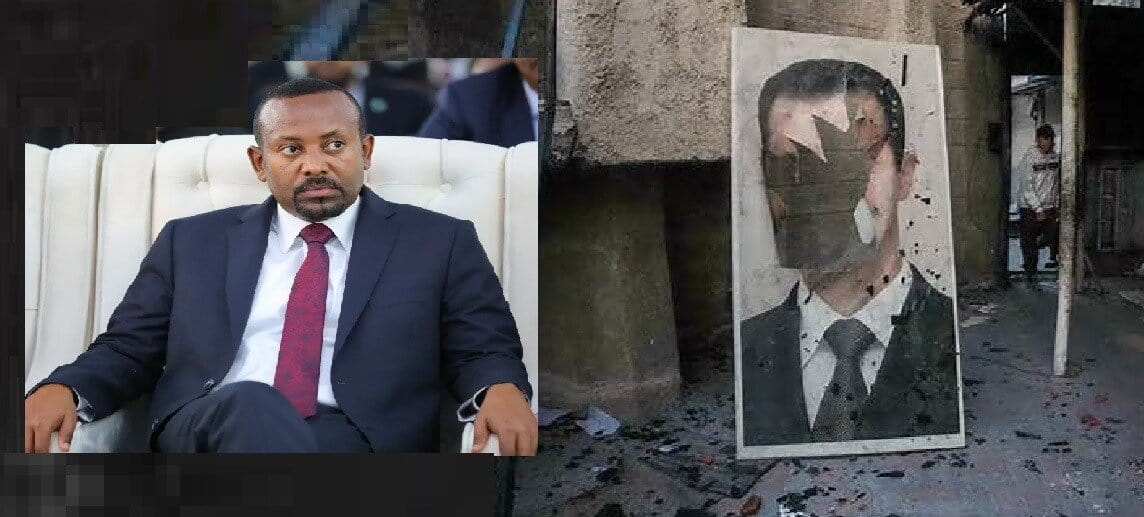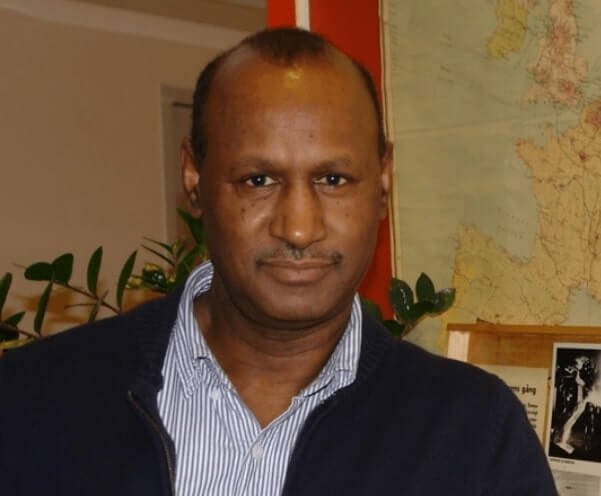 Dahilon Yassin
Dahilon Yassin
The Syrian uprising against Bashar al-Assad’s regime which escalated into a civil war was violently crushed by the Syrian government in 2011. 13 years later, a surprise rebel offensive reached Damascus in less than two weeks ending half a century of Assad family’s dictatorial rule. It surprised everybody including the rebels themselves as journalist and Syrian analyst, Hassan I. Hassan put it.
The Syrian civil war claimed hundreds of thousands of lives and displaced about 14 million people making Syria the largest global displacement crises. Number of armed factions opposed to the regime and backed by powerful foreign powers with conflicting motives has complicated the situation. This is an attempt to shed light on the Syrian situation which is dominated by mixed feelings of hopes and uncertainties following the sudden collapse of the Assad regime.
Major rebel factions
- Hayat Tahrir al-Sham (HTS)
The recent lightning offensive that led to the fall of Assad’s brutal regime was spearheaded by the Hayat Tahrir al-Sham (HTS); an Islamist militant group led by Abu Mohammed Al-Golani (a reference to his alleged root to the Golan heights).
Hayat Tahrir al-Sham (HTS; هيئة تحرير الشام, ‘Organization for the Liberation of the Levant’), commonly referred to as Tahrir al-Sham, has a complex history. HTS, evolved from Jabhat al-Nusrah, established in 2011, that became al-Qaeda’s Syrian affiliate. It broke ties with Al-Qaeda in 2016 and rebranded itself as Jabhat Fatah al-Sham (JFS). In 2017, the group, together with other groups, merged into Hayat Tahrir al-Sham (HTS). HTS, under the leadership of Al-Golani and with support of Turkey and many other actors cemented its power base in the northwestern province of Idlib eventually emerging as the most powerful rebel faction in Syria.
Despite Al-Golani’s effort to distance his new group from al Qaeda, the US designated the group a terrorist organisation in 2018 and placed a $10 million bounty on Al-Golani’s head (it remains so).
HTS, in November 2017, created the Syrian Salvation government, a civilian administration governing parts of Idlib Governorate. Mohammed al-Bashir who until the fall of the Assad regime led the administration is now appointed as the new prime minister of the transitional government of Syria.
Not only Al-Golani who now refers to himself with his real name, Ahmad Hussein al-Shara depicts himself as a champion of pluralism and tolerance with whom the West can do business with, but also the West has started promoting him as moderate or a transformed man. Al-Golani’s exclusive interview with CNN two days before the collapse of Assad’s regime is a case in point.
- Syrian National Army (SNA)
The Syrian National Army (SNA; الجيش الوطني السوري) is a coalition of armed factions that emerged at the start of the Syrian uprising. It was officially established in 2017 in Istanbul under the auspices of Turkey, which provides funding, training, and military support.
The SNA has taken part in Turkish military operations along the border with northern Syria, targeting the Kurdish forces and has even been involved in pursuing Turkish military interests outside of Syria, including in Azerbaijan, Libya, and Niger.
The SNA, as soon as Assad was overthrown, clashed with Kurdish forces in northern provinces raising tension in the area, a move aligned with Turkey’s main goals of preventing the presence of Kurdish forces along the Turkish-Syrian border.
While the SNA along HTS has played an important role in toppling the Assad regime, its close ties with Turkey has made it unpopular among some Syrians.
- Syrian Democratic Forces (SDF)
Established in 2015, the US backed Syrian Democratic Forces (SDF) is a coalition primarily composed of Kurdish fighters, alongside other minority groups. It has received significant support from the US, particularly in the campaign against the Islamic State (ISIS).
After ISIS was driven out of the area with support of the US, the Kurdish-led forces in 2018 established their own region known as Autonomous Administration in North and East Syria (AANES). The SDF hopes to receive international recognition for its Autonomous Region while Turkey, which views the group as extension of the Kurdistan Workers’ Party (PKK), designated it as a terrorist group. So did the United States, the EU, and some other countries. Turkey, moreover, has been supporting rebel groups such as SNA as part of its effort to expel the Kurdish-led forces from the area.
While the Syrian rebel forces were celebrating the fall of Assad’s regime in Damascus, the Turkish-backed Syrian National Army (SNA) was busy launching an attack on Manbij in northern Syria which is under the control of U.S.-backed, Kurdish-led Syrian Democratic Forces (SDF). Manbij, located about 95km north-east of Aleppo (Arabic: ﺣَﻠَﺐ, Ḥalab) has been under the control of SDF since it was liberated from ISIS in 2016.
Major foreign actors
Major actors involved in the Syrian conflict include Turkey, Iran, Russia, the US, and Israel in addition to number of Gulf States such as Saudi Arabia, Quarter and Emirates.
- Turkey,on many occasions, has launched military interventions across the border into Syria mainly against the Kurdish-led forces. It has exerted its influence in Syria by backing major armed groups such as HTS and SNA and expected hence to be a major player in the post Assad Syria.
The US and Turkey backing opposing factions in Syria do not see eye to eye on how to deal with the Syrian opposition forces. It remains to be seen if this will change following the fall of the Assad regime.
- Russiahas been Assad’s close ally providing vital support throughout the Syrian civil war, and its forces proved to be a decisive factor helping the Assad regime to maintain power. Russia’s capacity to intervene directly has, however, diminished as its resources had to be diverted to the war in Ukraine. This partly explains the absence of Russia’s visible effort to rescue Assad this time as it did in the past.
Russia that has granted political asylum to Bashar Al Assad has, beyond face saving rhetoric, shown keen interest to establish relations with the new leaders of Syria. Moscow, according to the state media, has already contacted Hayat Tahrir al Sham (HTS) leaders few days after the rebel group took control of Damascus and hopes to maintain its two military bases in Syria which remain intact – a naval base in Tartus and an air base near the port city of Latakia.
- Iranwhich viewed Syria as its strategic ally to counter the US and Israeli influence in the region, has supported Assad’s regime by providing significant support including deploying Iranian forces and Hezbollah militants. The fall of Assad, hence, is a major blow to what Iran considers the axis of resistance, a coalition against US and Israeli influence in the Middle East, and consequently has the most to lose.
Faced with a weakened Hezbollah in Lebanon, Russia distracted by its fight in Ukraine and the collapse of Assad regime in Syria, Iran is struggling to adapt to the new situation. This poses a question if Iran is the next target for a regime change.
- The U.S.following a brutal crackdown of protest movements by the Syrian government, imposed sanctions on Syria in early 2010s. It initially supported opposition groups during the early stages of the uprising, shifting focus later to fighting ISIS in Syria. It, however, continued to support rebel groups mainly the Kurdish led forces as part of fighting ISIS.
About 900 US troops remain deployed in Syria, primarily in Kurdish-controlled areas and oil-rich regions in the northeast, as well as at a military outpost in the border zone between Syria, Iraq, and Jordan. Trump has expressed his intention to stay away from the Syria conflict, but developments in Syria will probably be too important to ignore. His disengagement signal, further, will be alarming to the Kurdish led forces in Syria as this could mean diminishing or end of US support to Kurdish rebels which is essential for their survival.
- Israelmoved quickly, as Syrians were celebrating the end of Assad regime, to destroy Syria’s vital military infrastructures such as ammunition depots, air defences and aircrafts, naval bases, communication, intelligence and reach centres with a largest air raid since the Arab-Israeli war.
It, further, expanded dramatically into Syrian territory under the guise of security concerns reaching about 20 km away from Damascus with no objection from the new authorities in Syria or the international community.
Many are wondering if the Israeli actions are part of its wider efforts of realising greater Israeli project.
Summary
The Assad family’s 54 years brutal dictatorship has finally ended and Syria with mixed fillings of hope and fear finds itself at a crossroad. Many in Syria and around the world are delighted to witness the end of the Assad era hoping to see a new Syria that reflects their hopes and dreams. Syria, on the other hand, remains a deeply fractured country with daunting challenges ahead.
While the future of Syria is fraught with uncertainty, the collapse of the Assad regime will certainly alter the geopolitical map of the region.
The Israeli action amid the chaos of change clearly demonstrates that the Syrian conflict is far from over. Turkey, which is keen to create a buffer zone along its border with Syria to keep away Kurdish militants, could have more ambitious plans in store for the new Syria.
Bashar Al Assad who succeeded his father in 2000 came to power with a reputation as a modernizer and a reformer. The hopes that were raised by Assad’s presidency was, however, quickly dashed as Bashar Al Assad revived the authoritarian tactics of his late father’s administration.
Al-Golani, the new leader of Syria succeeding Assad, has recently promised a lot and spoke with quiet assurance about future of Syria. Al-Golani in his recent exclusive interview with CNN responding to a question why people should believe him after all said, people should not judge him by his words but by his actions. His words will be put to the test by scrutinizing his actions.
Now that Assad’s regime is gone, how will the new leaders of Syria navigate the challenging and at times conflicting expectations?
What kind of strategies will the influencing foreign actors, discussed above, follow towards the post Assad Syria?
Can the triumphant rebel coalition manage to harmonize their policies and unite the country, or is this the beginning of yet another sectarian conflict?
The world will closely watch developments in the post Assad Syria as so many questions remain unanswered leaving a wide room for uncertainties.
Hoping for a better tomorrow for the people of Syria















